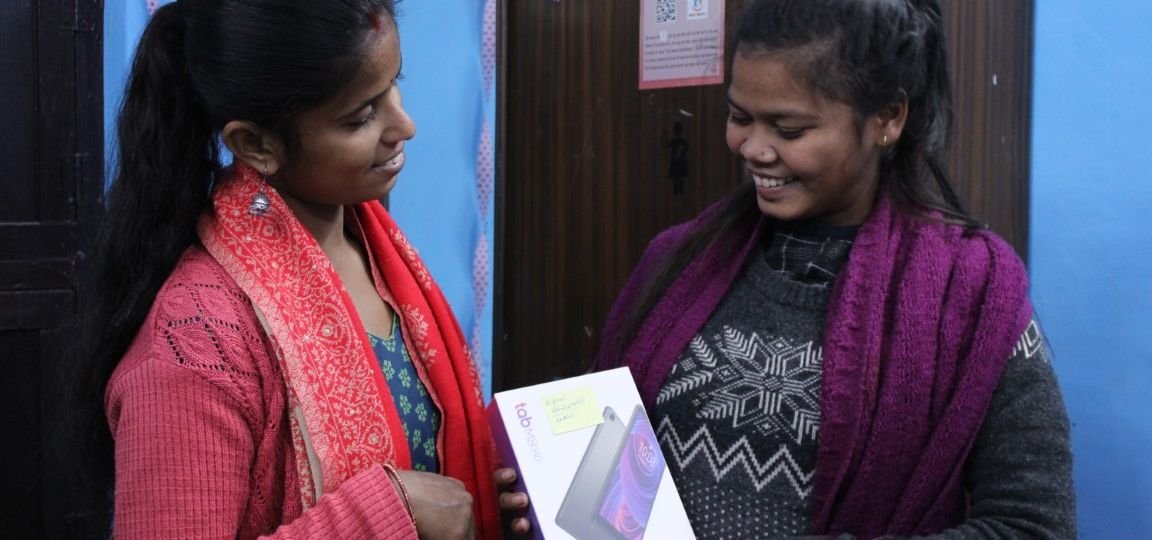
Since 2010, Protsahan crisis intervention officers and child protection officers, have deeply understood from direct on-ground evidence of working with children facing child rights violations of abuse, violence and neglect within families and communities they live in, that childhood trauma can have lasting effects on an individual’s mental and emotional well-being. It can manifest in various forms such as anxiety, depression, and PTSD. Traditional methods of therapy may not be enough to address the complex and multifaceted nature of trauma. However, a feminist approach that incorporates creativity and community can help children and adolescents heal from trauma and build resilience as they start their formative adult years and relationships with peers. It is a critical stage in the life of any human being.
Trauma and Memory
When a child is abused, the trusted people around her generally act as if it weren’t happening. Since no one else acknowledges the abuse, the child sometimes is made to feel that it wasn’t real. Because of this, they feel confused. The child isn’t able to trust their own experience and perceptions. Moreover, others’ denial leads the child to suppress their memories, thus further obscuring the validation of abuse.
Traumatic events can be difficult to process and remember for children. The brain often stores traumatic memories differently from other memories, which can result in flashbacks and emotional distress or denials of the occurrence of abuse. This can make traditional talk therapy challenging, as it can be difficult to verbalize traumatic experiences. Protsahan’s feminist approach to healing childhood trauma recognizes the importance of addressing trauma in a holistic manner. It acknowledges the interconnectedness of the mind, body, and emotions, and recognizes the role of social, economic and cultural factors in shaping the child’s experiences.
HEART: Healing with Art
Art-based therapies such as music, dance, and visual arts are powerful tools that Protsahan uses when doing process work with a child for healing trauma, with the unique HEART Model of Healing with Art through interventions centered on Health, Education, Art, Rights, and Technology. These playful art modalities provide a safe and non-judgmental space for individuals to express their emotions and experiences with trusted and trained caregivers. They also allow children to access and process traumatic memories in a nonverbal manner. A feminist approach to healing childhood trauma recognizes the importance of creativity and the arts in the healing process.
Visual arts, in particular, can be an effective tool for healing trauma. Creating visual art can be a cathartic and empowering experience, allowing children to externalize their internal experiences and gain a sense of control over their trauma. Art can also be a powerful medium for social and political commentary, allowing children, especially adolescents, to express their experiences of oppression and injustice.
Recovery and Resilience
Healing from trauma is a long and complex process that requires patience, support and a deep understanding of the context of abuse incidents. A feminist approach to healing childhood trauma recognizes that recovery is not just about overcoming trauma but also about building resilience. Resilience refers to an individual’s ability to adapt and cope with adversity. It is not a fixed trait but can be developed through supportive relationships, meaningful activities, and a sense of purpose.
Community support is a crucial component of a feminist approach to healing childhood trauma. Creating a safe and supportive community can help individuals feel seen and heard, which can be healing in itself. Additionally, community support can provide individuals with access to resources and opportunities for growth and healing.
Healing Is Possible
A feminist approach to healing childhood trauma recognizes the complexity of trauma and the need for a holistic and community-based approach. It incorporates creativity and the arts as powerful tools for healing and emphasizes the importance of building resilience. Trauma recovery is not just about overcoming trauma but also about building a sense of purpose, connection, and belonging. By creating safe and supportive communities that prioritize healing and growth, individuals can learn to not just survive but thrive after experiencing trauma.

